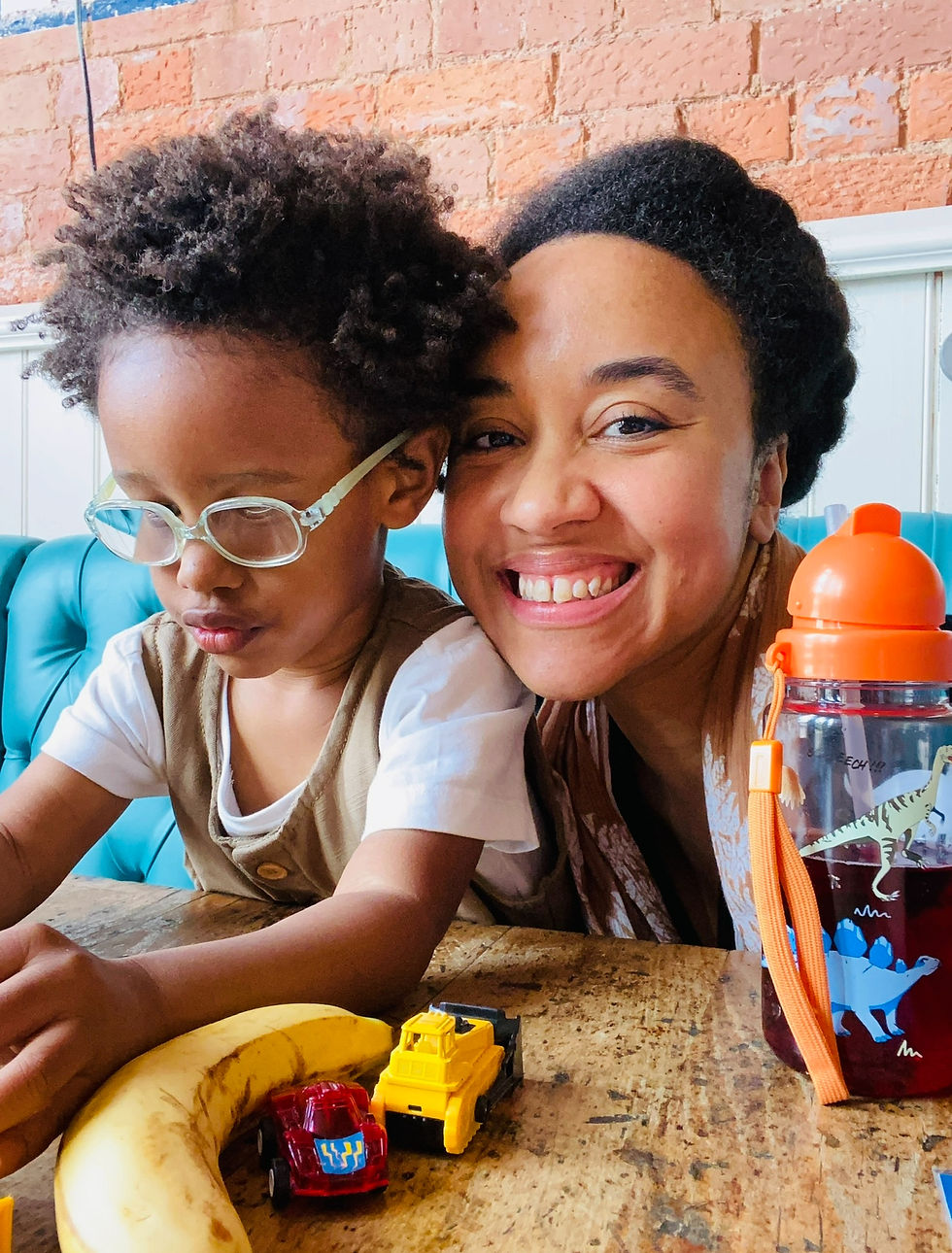How to Hold Space for Your Toddler’s Feelings When You Introduce Breastfeeding Boundaries
- Danielle Facey
- Nov 15, 2024
- 4 min read
Updated: Mar 5
Breastfeeding is a journey full of love, connection, and growth—for both you and your little one. But like all journeys, it evolves. As your baby grows into a toddler, you may find yourself needing to set new breastfeeding boundaries. I most certainly did! Whether it’s for your mental health, your physical well-being, or simply because the time feels right, this transition can be tender and challenging.
It’s natural and normal for your toddler to feel upset about these changes, just as it’s natural for you to feel conflicted about the process. Why would you hold a breastfeeding boundary when lifting up your top and nursing your child will stop their tears in seconds? The beauty of this process is that it’s an opportunity to deepen your bond and teach your little one that boundaries, even when difficult, can be held with love.
Self-Regulation: Start with Your Own Emotions
Introducing breastfeeding boundaries often brings up big emotions—not just for your toddler, but for you too, mama. You might feel guilt, sadness, frustration, or even relief. It’s important to allow yourself to feel these emotions without judgment.
When you give yourself permission to acknowledge your feelings, you create space to regulate them. This doesn’t mean suppressing or ignoring your emotions - on the contrary - it means holding them with compassion. Take a moment to breathe, journal, or simply sit with how you’re feeling. You can feel frustrated and still be a loving, empathetic parent.
Self-regulation is key to co-regulation. When you’re calm and grounded, you’re better able to support your toddler through their own big feelings.
You Are the Best Person to Co-Regulate with Your Child
As your toddler navigates the emotions that come with new breastfeeding boundaries, you are uniquely equipped to guide them. You know them better than anyone else. You’ve spent countless hours nursing, bonding, and learning their cues.
This bond is your superpower. It allows you to co-regulate—helping your child manage their feelings by staying calm and connected. When your toddler cries, clings, or protests, your presence reassures them that their emotions are safe with you.
Think of it as laying the foundation for future moments when they’ll need your support. Just as you’re there now to help them through the discomfort of this transition, you’ll be there later for scraped knees, heartbreaks, and life’s other challenges.
Communicate with Love and Honesty
Communication is the cornerstone of introducing breastfeeding boundaries. This is the first step in my Weaning With Love process, which you can learn more about in my guide and webinar.
Start by explaining the changes in a relaxed and informal way. For example, “Mama’s milk is for bedtime now, but we can still have extra cuddles if you want.” Keep your tone light and reassuring, and let your toddler ask questions or express their feelings.
Toddlers often don’t have the words to articulate their emotions, so their response might come in the form of tears or meltdowns. That’s okay. Validate their feelings—“I know it’s hard, and I’m right here with you”—and remind them that their emotions are normal and welcome.
Take It Slow: Gradual Transitions Build Trust
Introducing breastfeeding boundaries doesn’t have to happen all at once. Gradual changes give both you and your toddler time to adjust.
Start by reducing nursing sessions at times when it feels most manageable. Replace those sessions with other forms of comfort, like reading a book, offering a favorite snack, or snuggling together. Over time, you can phase out more sessions while reinforcing new routines.
These gradual changes help your toddler feel secure. They learn that while some things may change, your love and connection remain constant.
Boundaries Are a Gift for Both of You
Setting boundaries is not only okay—it’s vital. By introducing breastfeeding boundaries with love and intention, you’re modeling for your child that boundaries are a healthy, essential part of relationships.
This lesson will serve them well as they grow. Just as you’re showing them now that you can hold space for their feelings while honoring your own needs, they’ll learn to do the same in their own relationships someday.
You’ve Got This, Mama
Introducing breastfeeding boundaries can feel daunting, but you’re not alone. You have everything you need to hold space for your child’s feelings and navigate this transition with love and empathy.
By starting with your own emotions, communicating openly, and making gradual changes, you’re setting the stage for a deeper bond and teaching your little one invaluable lessons about trust, connection, and resilience.
For more support, practical tips, and step-by-step guidance, check out:
🌟 Weaning with Love Course – The ultimate 8-week step-by-step program to help you stop breastfeeding in a way that feels intuitive and aligned with your parenting values. Get lifetime access today! Join here
🌟 Weaning with Love Webinar – A one-hour workshop that walks you through gentle weaning strategies. Plus, get the Weaning with Love guide FREE when you purchase the webinar. Watch now.
🌟 Weaning with Love Guide – A comprehensive, 40-page resource designed to help you transition away from breastfeeding smoothly. Get your copy here.
Whether you’re just beginning to consider weaning or need deeper guidance, these resources are here to support you in making this transition with love, confidence, and care.
You’re doing an incredible job, mama. Keep going—you’ve got this.
With love,
Danielle
❤️


Comments